Contemporary interior design increasingly draws on the rich tradition of the local environment, as designers and architects seek inspiration in recognizable patterns and materials from the past. Slovenian traditional aesthetics, rooted in nature and local materials, have experienced a remarkable revival over the past decade. Thoughtful integration of traditional elements into modern living spaces reflects current lifestyle needs and aesthetics, while offering a nostalgic glimpse into the past.
Linking Tradition and Modernity
Slovenian interior tradition is primarily based on natural materials, craftsmanship, and functionality derived from rural architecture and furnishings. Typical features such as solid wood, stone, linen, and wool once served as necessities; today, they are synonymous with quality, sustainability, and timeless elegance. Modern interiors draw inspiration from tradition—not by replicating past settings literally, but by seeking balance between archetypal forms and contemporary solutions.
In modern spaces, we can observe subtle references to traditional elements: natural plaster walls, exposed wooden beams, stoves and ceramic fireplaces, arched transitions, and airy, light-filled rooms with large windows that connect the interior with nature.
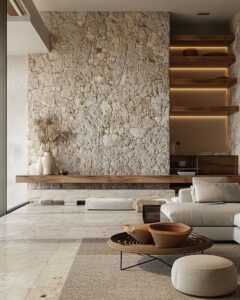
(Foto: Pinrterest)
Materials as a Connecting Element
Material selection remains key to linking tradition with modernity. Slovenian traditional architecture has always been shaped by locally sourced natural materials. Solid oak, spruce, larch, slate, and limestone are still highly valued for their aesthetic and functional qualities. In modern interiors, these materials are reinterpreted: wood may be oiled, brushed, or thermally treated, while stone combined with glass and metal creates sophisticated contrasts.
In addition to natural materials, textiles play a prominent role—canvas, wool, linen, and felt with modern patterns reinterpret traditional motifs such as Gorenjska ornaments or beehive panels. These textile elements add subtle color accents, texture, and a sense of homeliness to the space, without appearing outdated or overly nostalgic.

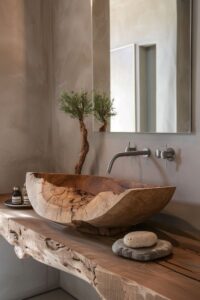
(Foto: Pinrterest)
Color Palette and Motifs
The color palette inspired by the Slovenian countryside is calm and harmonious. Earthy tones, wood hues, ochres, grassy greens, and stony greys create a soothing atmosphere that contrasts the fast pace and digital alienation of urban environments. Contemporary designers often use these colors for main surfaces, while lively patterns and accessories—such as traditional embroidery, ceramics, or artworks—add a personalized touch.
Motifs from Slovenian folk art, such as floral patterns, geometric ornaments, natural imagery, and symbolic icons (e.g., carnations, roosters, mountains, lace, etc.), appear in minimalist or abstract forms in modern interiors. In this way, they retain their identity while being adapted to a contemporary design language.
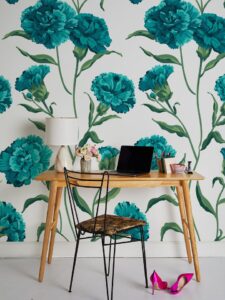
(Foto: Pinrterest)
Functionality and Sustainability
Slovenian interior tradition was never purely aesthetic—it was above all functional. Even today, there is an unspoken rule that every object in a space should serve a clear purpose and be crafted to last for generations. Modern interiors that follow these principles prioritize quality over quantity—fewer objects, but those that are durable, functional, and aesthetically refined.
Sustainability is becoming a central theme in contemporary design. Incorporating traditional Slovenian materials and principles also supports local artisans, reduces carbon footprint through shorter transport distances, and preserves skills and knowledge that might otherwise be lost. The key is adapting these elements to contemporary living standards—tradition should serve as a foundation, not a limitation.
Successfully incorporating Slovenian traditional elements into a modern interior doesn’t require a complete redesign. With just a few thoughtful choices, one can create a sense of authenticity, warmth, and connection to Slovenian heritage:
- – Choose pieces made from local wood, handcrafted or with a story behind their origin, to add value and individuality to your space. Restored antiques like chests, cabinets, or tables can be meaningfully combined with minimalist furniture.
- – Traditional woven rugs, hand-embroidered cushions or tablecloths, and modern interpretations of beehive panels on walls can offer a subtle yet effective tribute to tradition.
- – Painting walls in warm, earthy tones or adding wooden cladding to parts of walls or ceilings can create a cozy, sheltering atmosphere.
- – Supporting contemporary Slovenian artists and craftsmen allows for a modern interpretation of traditional motifs through paintings, ceramics, glass, or metalwork.
- – Lighting made from natural materials—such as wrought iron fixtures or hand-blown glass—adds a soft, intimate glow and enhances natural textures in the space.
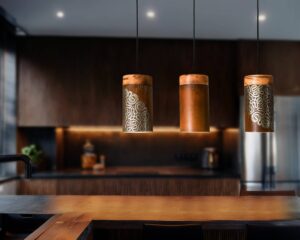
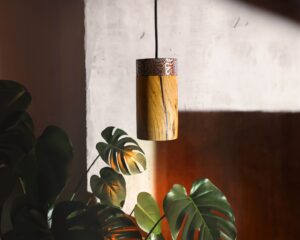
(Foto: Farakaza)
Innovative Use of Traditional Elements
The best examples of contemporary Slovenian interiors are based on innovative use of traditional forms and techniques: for instance, walls clad in wood from old hayracks, restored stone shelves, or a farmhouse stove incorporated into an open, minimalist living space.
Modular furniture made from Slovenian wood, which allows flexibility for various spatial needs, and modern partition elements inspired by traditional curtains or wooden panels, represent further examples of innovation rooted in heritage. It is essential that each element tells its own story while harmonizing with the rest of the interior.
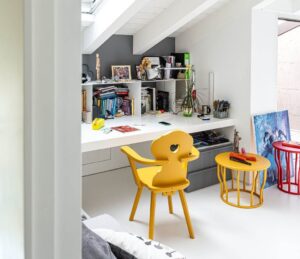
The Role of the Architect and Designer
In the process of designing interiors that intertwine tradition and modernity, the architect or interior designer plays a crucial role. In-depth knowledge of local heritage, materials, and techniques is essential, as is understanding the needs of contemporary living. Open communication between client and designer is key to creating unique solutions that go beyond clichés and allow tradition to live on in a modern way.
Incorporating Slovenian tradition into contemporary interiors has become a trend and, more importantly, a long-term commitment to preserving identity, encouraging local creativity, and promoting sustainable development. Through thoughtful design that respects the past while looking toward the future, the interior becomes a cultural statement: a tribute to the landscape, tradition, and people who have shaped the foundations of Slovenian living for centuries. In a modern interior, Slovenian tradition becomes a source of inspiration, innovation, and quality—a bridge between past and present, worth crossing every single day.
For more information or consultation, contact us: Tel: 00386-40-626-131; Email: tajnistvo@bazarealestate.com.





